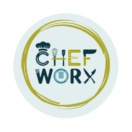
Winning with Wholesalers: Negotiation Tricks to Shrink Food Bills
In the highly competitive food industry, managing costs is essential for maintaining profitability and staying ahead of the competition. One area where significant savings can be achieved is in cutting supplier costs. By negotiating better prices from distributors, exploring alternative protein and produce sources, and implementing bulk-ordering strategies, food businesses can effectively reduce expenses without compromising on quality. In this article, we will explore various strategies and tactics to help food industry professionals navigate the complex landscape of supplier cost reduction. Whether you own a restaurant, manage a catering business, or operate a food manufacturing company, these insights will provide valuable guidance on how to create a sustainable and cost-effective supply chain.
1. Introduction: The importance of cutting supplier costs in the food industry
In the fast-paced and competitive world of the food industry, cutting supplier costs can make a significant difference to the bottom line. Whether you’re a restaurant owner, a caterer, or a food manufacturer, finding ways to negotiate better prices from distributors, exploring alternative protein and produce sources, and bulk-ordering strategically can help you reduce expenses and increase profits. In this article, we’ll delve into strategies and tips to help you navigate these areas and make smarter decisions for your business.
2. Negotiating better prices from distributors: Tips and strategies
2.1 Understanding the distributor landscape
To negotiate better prices from distributors, it’s crucial to understand the dynamics of the distributor landscape. Know who the key players are, what their specialties are, and how they operate. This knowledge will give you the upper hand when it comes to negotiating prices and terms.
2.2 Researching market prices and industry benchmarks
Do your homework and research market prices and industry benchmarks for the products you need. This information will help you establish a baseline for negotiations and ensure that you’re getting a fair deal. Don’t be afraid to shop around and compare prices from different distributors to leverage your position.
2.3 Building strong relationships with distributors
Building strong relationships with your distributors can work wonders when it comes to negotiating better prices. Communicate regularly, provide feedback, and show loyalty. Distributors are more likely to offer you favorable terms if they see you as a valuable and reliable partner.
2.4 Leveraging volume and long-term commitments
If you have the capacity to do so, consider leveraging volume and making long-term commitments with your distributors. By placing larger orders or committing to regular purchases, you can negotiate better prices and secure discounts. This approach benefits both parties, as it provides stability and predictability for the distributor while offering cost savings for your business.

3. Exploring alternative protein and produce sources: Diversifying suppliers for cost savings
3.1 Identifying alternative suppliers and vendors
Don’t limit yourself to a single supplier or vendor for your protein and produce needs. Explore the market and identify alternative sources that may offer better prices or unique products. By diversifying your suppliers, you can create competition and negotiate better deals.
3.2 Assessing the quality and reliability of alternative sources
While price is important, don’t compromise on quality and reliability. Before committing to alternative sources, thoroughly assess their track record and reputation. Request samples, conduct site visits, and gather feedback from other businesses that have worked with them. It’s essential to ensure that the alternatives you consider can meet your standards.
3.3 Conducting cost and benefit analysis of alternative options
Before switching to alternative protein and produce sources, conduct a comprehensive cost and benefit analysis. Consider factors such as pricing, quality, reliability, delivery logistics, and the potential impact on your menu or products. By weighing these factors, you can make an informed decision that maximizes cost savings without sacrificing other vital aspects of your business.
4. The benefits of bulk-ordering: Maximizing discounts and reducing expenses
4.1 Calculating cost savings through bulk ordering
Bulk ordering can be a fantastic way to maximize discounts and reduce expenses. Calculate the cost savings you can gain by purchasing in larger quantities. Keep in mind that while the upfront investment is higher, the long-term cost per unit will be lower, resulting in higher profit margins.
4.2 Establishing inventory management systems for bulk orders
To make the most of bulk orders, establish efficient inventory management systems. Track the shelf life, maintain proper storage conditions, and ensure efficient rotation of stock. This will help prevent waste and spoilage, ensuring that your bulk orders translate into actual cost savings.

4.3 Managing storage and shelf life considerations
Be mindful of storage and shelf life considerations when bulk ordering. Ensure that you have adequate space and proper storage facilities to accommodate larger quantities. Additionally, closely monitor expiration dates and implement systems to use older stock first. Proper management of storage and shelf life will prevent losses and maximize the value of your bulk orders.
Remember, cutting supplier costs is a continuous process that requires ongoing evaluation and adaptation. By implementing these strategies and staying informed about market trends, you can successfully reduce expenses and boost your profitability in the food industry.
5. Establishing long-term supplier relationships: Leveraging loyalty for better pricing
5.1 Nurturing open communication and trust with suppliers
When it comes to negotiating better prices from your suppliers, having a strong and open relationship is key. Take the time to get to know your suppliers beyond just business transactions. Share a joke, ask about their weekend plans, or even send them a funny cat meme once in a while. Building a rapport based on trust and mutual respect can go a long way in getting them on your side when it comes to pricing discussions.
5.2 Collaborating with suppliers to find cost-saving solutions
A great way to reduce supplier costs is by working together to find creative solutions. Think of it as a culinary version of a brainstorming session. Invite your suppliers to the table (pun intended) and discuss ways to optimize costs without sacrificing quality. Perhaps they can suggest alternative ingredients or packaging solutions that are more cost-effective. Remember, a problem shared is a problem halved, and a solution shared is a cost reduced.
5.3 Negotiating exclusive contracts and partnership agreements
If you’re serious about cutting supplier costs, it may be worth exploring exclusive contracts or partnerships with your preferred suppliers. By committing to a long-term relationship, you can negotiate better pricing and secure a stable supply of ingredients. Just make sure to read the fine print, so you don’t end up accidentally agreeing to supply your firstborn child or something equally outrageous. We’re in the food industry, not a fairy tale after all.
6. Implementing cost-saving technology and tools: Streamlining procurement processes
6.1 Utilizing inventory management software and automation
Gone are the days of manually counting broccoli florets or trying to decipher handwriting on inventory sheets. Embrace technology and invest in inventory management software that can help you keep track of your ingredients and optimize ordering. Automation can save you time, money, and your sanity, so you have more energy to focus on perfecting your crème brûlée.
6.2 Analyzing data for cost optimization and demand forecasting
Data is the gold mine of the 21st century, and it can be your secret weapon in reducing supplier costs. By analyzing data on ingredient usage, market trends, and customer demand, you can make informed decisions about when and how much to order. No more blindly throwing darts at a price list and hoping for the best. Use data to be the arrow that hits the bullseye of cost optimization.
6.3 Streamlining procurement workflows and reducing administrative costs
Let’s face it: paperwork is the broccoli of the business world—necessary but not the most exciting. Look for ways to streamline your procurement workflows and reduce administrative costs. Can you centralize your ordering process? Automate invoice payments? By cutting down on unnecessary bureaucracy, you can free up resources and focus on what really matters—creating delicious dishes.
7. Overcoming challenges in supplier cost reduction: Strategies for success
7.1 Addressing potential resistance from suppliers
Not all suppliers will be thrilled about the idea of reducing their prices. Some may resist, citing rising costs or the need for unicorn tears in their supply chain. But fear not, intrepid negotiator! Be prepared to address their concerns and find compromises that work for both parties. Remember, it’s not about winning a battle; it’s about building a sustainable partnership where everyone can thrive, except maybe those elusive unicorns.
7.2 Developing contingency plans for supplier disruptions
In the dynamic world of food supply, disruptions can happen faster than you can say “sautéed mushrooms.” Prepare for the unexpected by developing contingency plans. Identify alternative suppliers or explore different sources of protein or produce. It’s important to have a backup plan so that a temporary blip doesn’t turn into a full-blown culinary catastrophe.

7.3 Continuously monitoring and evaluating supplier performance
Even after you’ve successfully negotiated better prices and streamlined your procurement processes, the work doesn’t end there. Keep a watchful eye on your suppliers’ performance. Are they consistently meeting your expectations? Are there any areas for improvement? By regularly monitoring and evaluating supplier performance, you can ensure that you’re getting the most bang for your buck and make adjustments as needed.
8. Conclusion: Creating a sustainable and cost-effective supply chain in the food industry
Reducing supplier costs in the food industry is no piece of cake, but with the right strategies and a sprinkle of creativity, it’s definitely achievable. Establishing strong relationships, leveraging technology, and overcoming challenges will help you create a sustainable and cost-effective supply chain. So go forth, brave warrior of the kitchen, and conquer those supplier costs like a Michelin-starred culinary ninja!
In conclusion, cutting supplier costs is a critical aspect of running a successful and profitable food business. By implementing strategies such as negotiating better prices from distributors, exploring alternative sourcing options, and maximizing bulk-ordering benefits, significant savings can be achieved without compromising on quality. Additionally, establishing long-term relationships with suppliers and leveraging loyalty can lead to better pricing and improved collaboration.
By embracing cost-saving technology and tools and overcoming challenges along the way, food industry professionals can create a sustainable and cost-effective supply chain that contributes to long-term success. By prioritizing supplier cost reduction, businesses can position themselves for growth and competitiveness in the dynamic and ever-evolving food industry landscape.
FAQ
1. How can I negotiate better prices from distributors?
Negotiating better prices from distributors requires a strategic approach. Start by understanding the distributor landscape, researching market prices and industry benchmarks, and building strong relationships with distributors. Leveraging volume and long-term commitments can also give you an advantage in negotiating better prices.
2. What are the benefits of exploring alternative protein and produce sources?
Exploring alternative protein and produce sources can help diversify your suppliers and potentially lead to cost savings. By identifying alternative suppliers and vendors, assessing their quality and reliability, and conducting cost and benefit analysis, you can find new sources that offer competitive pricing without compromising on product quality.
3. How can bulk-ordering help reduce expenses?
Bulk-ordering can maximize discounts and significantly reduce expenses. By calculating cost savings, establishing inventory management systems, and managing storage and shelf life considerations, you can take advantage of economies of scale and enjoy lower per-unit costs. It is important to strike a balance between bulk ordering and maintaining a manageable inventory to avoid wastage and spoilage.
4. What role does technology play in cutting supplier costs?
Technology can play a crucial role in streamlining procurement processes and reducing costs. Inventory management software and automation can help optimize inventory levels and avoid overstocking or stockouts. Analyzing data for cost optimization and demand forecasting can further enhance efficiency. Streamlining procurement workflows and reducing administrative costs through technology can also contribute to overall cost savings.

